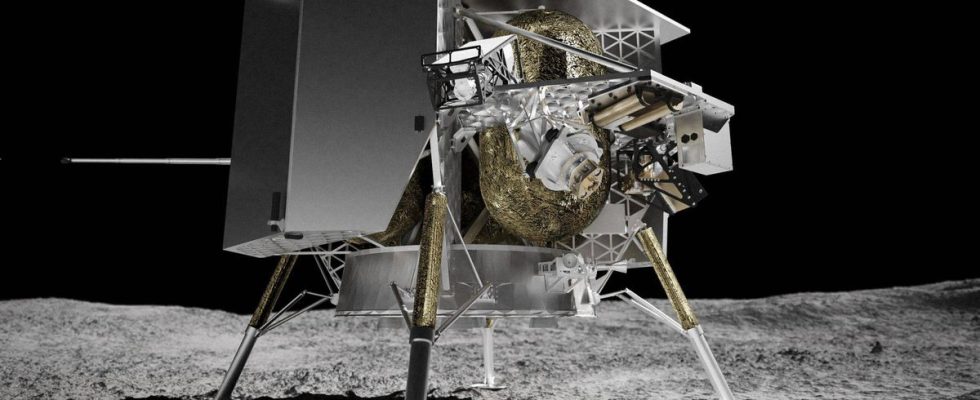End of the journey for Peregrine. In a press release published on Sunday, the start-up Astrobotic announced that its device, which was to land on the Moon, “ [se dirigeait] towards Earth” and “will likely burn in the atmosphere” of our planet.
“Although we believe the device could operate for several more weeks and could potentially raise its orbit to avoid Earth, we must take into consideration anomalies in the propulsion system and use the vehicle’s onboard capabilities to terminate the mission in a responsible and safe manner,” the company said in its press release.
Wishing to “protect the satellites in Earth orbit and ensure not to create debris in cislunar space”, the area between the Earth and the orbit of the Moon, Astrobotic “made the difficult decision to maintain the current trajectory of the device” towards the Earth and let it burn up during its atmospheric re-entry.
The mission took off on January 8 from Cape Canaveral, Florida, successfully marking the first flight of the Vulcan Centaur rocket from the industrial group ULA, which brings together Boeing and Lockheed Martin. The spacecraft, however, suffered several incidents, including a fuel leak, which led its designers to rule out a moon landing.
Instruments that are still functional
The device is currently on a trajectory between the Earth and the Moon and Astrobotic had indicated that it was doing everything possible to extend its lifespan as much as possible and allow its onboard instruments to collect and transmit data. “All payloads expected to light up and communicate did so and even achieved scientific objectives,” the start-up said. In addition to scientific equipment for NASA, Peregrine transports goods for private clients, including a can of sports drink as well as ashes and DNA from humans and animals.
This very promising mission was to mark the first landing of an American device on the Moon in more than fifty years and allow Astrobotic to be the first private company to land a machine on the Moon.
Despite this failure, NASA officials have indicated that they want to continue to increase their attempts to increase their chances of success. The next one will be that of Intuitive Machines, in February. Astrobotic itself will get another chance in November with its Griffin lander, which will carry NASA’s Viper rover to the Moon’s South Pole.

